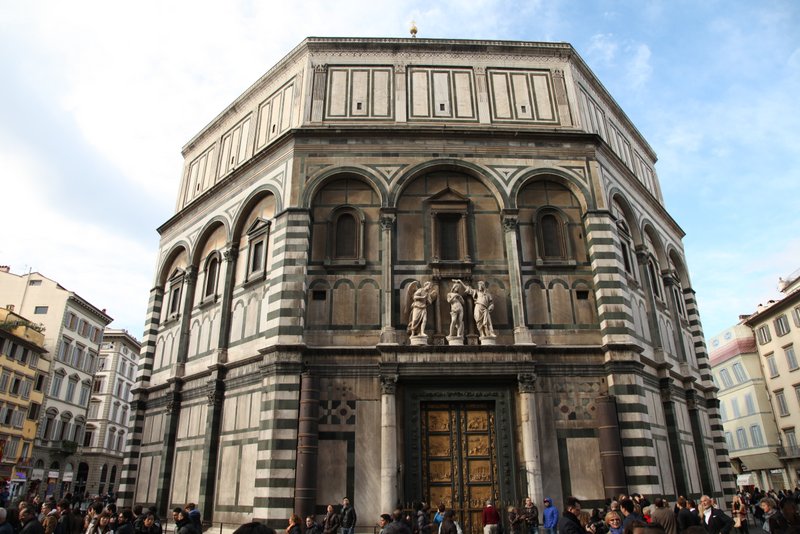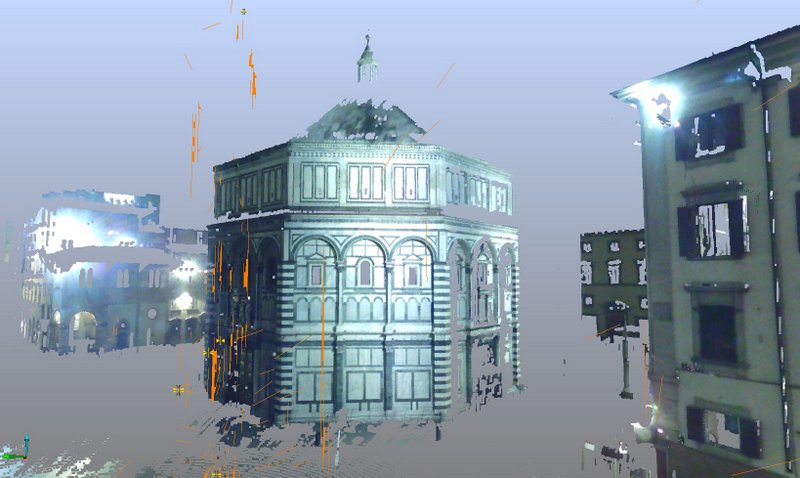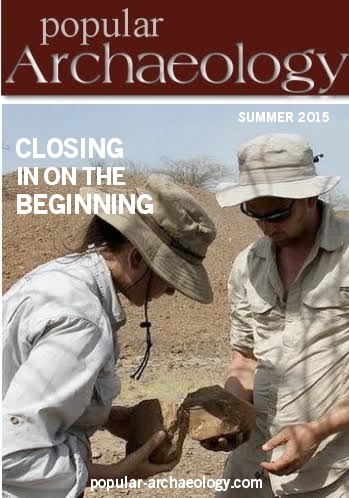Using state-of-the-art techniques, an international team of specialists has been busy piecing together a chronology of construction for the Baptistery of Saint John, otherwise known as the Baptistery of San Giovanni, one of the oldest buildings in the iconic historic Renaissance heart of Florence, Italy. Along the way, they have uncovered some tantalizing clues to its construction history, including history before the time of the Baptistery itself.
Constructed between 1059 and 1128 AD, the Baptistery is well known for its three sets of artistically significant bronze doors with relief sculptures—the east doors were referred to by Michelangelo as the Gates of Paradise. It was also here that the Italian poet Dante and many other famous Renaissance figures, such as the Medici family, were baptized. But this functional space also defines an unwritten history that goes back even before Renaissance times, an inner face unseen by the public. Thanks to the miracles of high-tech and digital exploration, this unseen face is beginning to emerge.
“We imaged, via terrestrial laser scanning, thermography, high resolution photogrammetry (including structure from motion), stereoscopic imaging, and multispectral imaging, the interior of the building and the exterior of the building – emphasizing spaces that the public has no access to, including the subterranean Roman archaeological site underneath the altar/scarsella – as well as the main chamber of the active house of worship which the public can access,” said Ashley Richter, a member of the special team. The Opera del Duomo di Santa Maria del Fiore (OPA), the organization responsible for the conservation and restoration of the site, invited select members of UC San Diego’s Center of Interdisciplinary Science for Art, Architecture and Archaeology (CISA3) at the Qualcomm Institute to help build an interdisciplinary team of researchers working to establish a chronology of construction of the structure, a key to understanding how the site can be conserved and protected for the future. Richter manned the laser scanner, an integral part of the total operation.
“The evolution of the site from its Roman origins upwards is rather mysterious,” Richter said. “Significant research has been done by dedicated scholars, but they’ve no way to correlate that information altogether to start making sense of it. Enter CISA3 with our concept of layered realities of data draped on a digital scaffold.”
__________________________________________
 The exterior of the Baptistery of San Giovanni, East Face. Image provided by Ashley Richter
The exterior of the Baptistery of San Giovanni, East Face. Image provided by Ashley Richter
________________________________________________________
 A point cloud screenshot of the northeast face of the Baptistery. Image provided by Ashley Richter
A point cloud screenshot of the northeast face of the Baptistery. Image provided by Ashley Richter
_________________________________________________________
 A single scan point cloud screenshot of the interior of the Baptistry. Image provided by Ashley Richter
A single scan point cloud screenshot of the interior of the Baptistry. Image provided by Ashley Richter
_________________________________________________________
The onsite work, part of a project still in progress, was done within a two-week window at the end of a lengthy two-month field season in 2013. For the team, it was not a convenient undertaking.
“The Baptistery is a popular tourist spot and open for regular masses in one of the most crowded public plazas in Italy,” continued Richter. “Most of the imaging work requires that crowds be sparse or non-existent. We scanned, imaged, and did thermography of the exterior of the Baptistery late at night from 1 AM to 5.30 AM.”
“The inside was even trickier than the outside. We were allotted chunks of time just after the monument closed to the public or in the early hours of the morning before it was opened. In the morning we initially imaged the subterranean levels. They gave us an extra hour by locking us in there while mass went on above us.” These levels produced some intriguing results (see video below), which included the use of Ground Penetrating Radar (GPR) and imaging to reveal a heretofore unexcavated portion of an ancient Roman villa that once graced this site in the 4th or 5th century AD. Ongoing archaeological excavations that began in the 1970’s have already revealed significant portions of the villa structure, but the new imaging investigations of the unexcavated portions revealed a possible staircase, two vaulted rooms, and a series of walls and hallways.
________________________________________
(In the above video, substitute ‘Roman villa’ for ‘Roman temple’ for accuracy.)
_________________________________________
The analysis of the Baptistery results is still in progress, and a third field season is tentatively planned for the very near future. But more than this, there is hope that this work will have important implications for similar future applications worldwide.
“It’s not about creating a bunch of pretty pictures and a static record of the site. Often that’s all that’s done with this technology,” says Richter. “Hopefully there will be an expansion of projects pushing for more public accessibility to visualization technologies and their digital heritage results, projects like the Open Access Antiquarianism collaborative my colleagues are working on as we move away from CISA3, the amazing efforts of non-profit groups focused on digital heritage like CyArk, or private companies with the fabulous potential to build technologies for digital heritage like Tanzle. Technology has some serious and exciting possibilities for expanding what we know about the past, just as the past is an intriguing resource around which we can build the visualization and analytical surveying technologies we’re going to need in the future.”
___________________________________________________________
Ashley Richter, in addition to her recent involvement in the CISA3 project, writes about digital archaeology in her blog, Adventures in Digital Archaeology, which is also among the content features of Popular Archaeology Magazine, and has been a key player in the Open Access Antiquarianism project.
___________________________________________________________
 Read more in-depth articles about archaeology with a premium subscription to Popular Archaeology Magazine.
Read more in-depth articles about archaeology with a premium subscription to Popular Archaeology Magazine.
In addition, the latest Popular Archaeology ebook is now available.
______________________________________________
Travel and learn with Far Horizons.
____________________________________________
 Popular Archaeology’s annual Discovery Edition eBook is a selection of the best stories published in Popular Archaeology Magazine in past issues, with an emphasis on some of the most significant, groundbreaking, or fascinating discoveries in the fields of archaeology and paleoanthropology and related fields. At least some of the articles have been updated or revised specifically for the Discovery edition. We can confidently say that there is no other single issue of an archaeology-related magazine, paper print or online, that contains as much major feature article content as this one. The latest issue, volume 2, has just been released. Go to the Discovery edition page for more information.
Popular Archaeology’s annual Discovery Edition eBook is a selection of the best stories published in Popular Archaeology Magazine in past issues, with an emphasis on some of the most significant, groundbreaking, or fascinating discoveries in the fields of archaeology and paleoanthropology and related fields. At least some of the articles have been updated or revised specifically for the Discovery edition. We can confidently say that there is no other single issue of an archaeology-related magazine, paper print or online, that contains as much major feature article content as this one. The latest issue, volume 2, has just been released. Go to the Discovery edition page for more information.
____________________________________________







